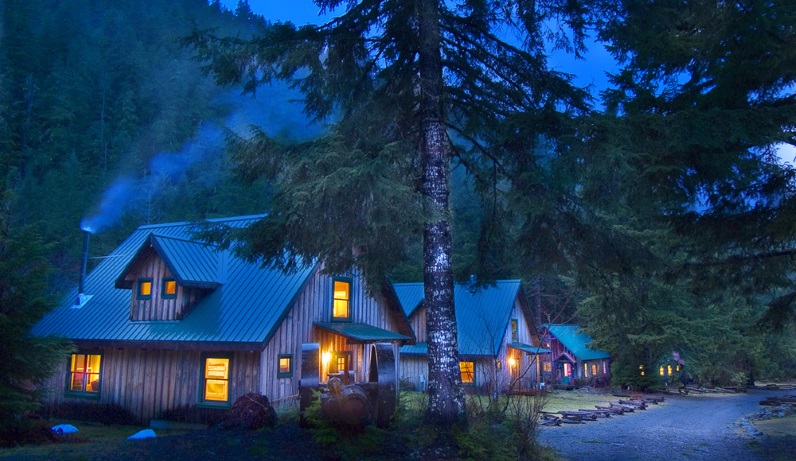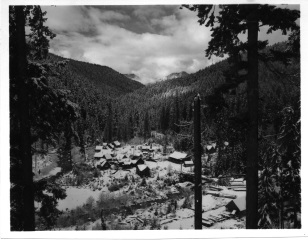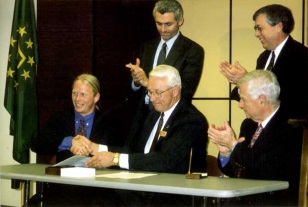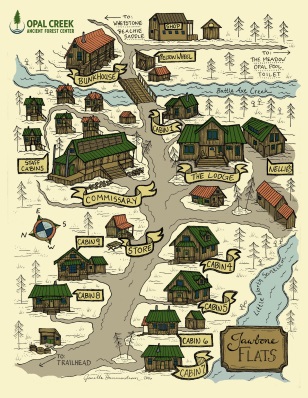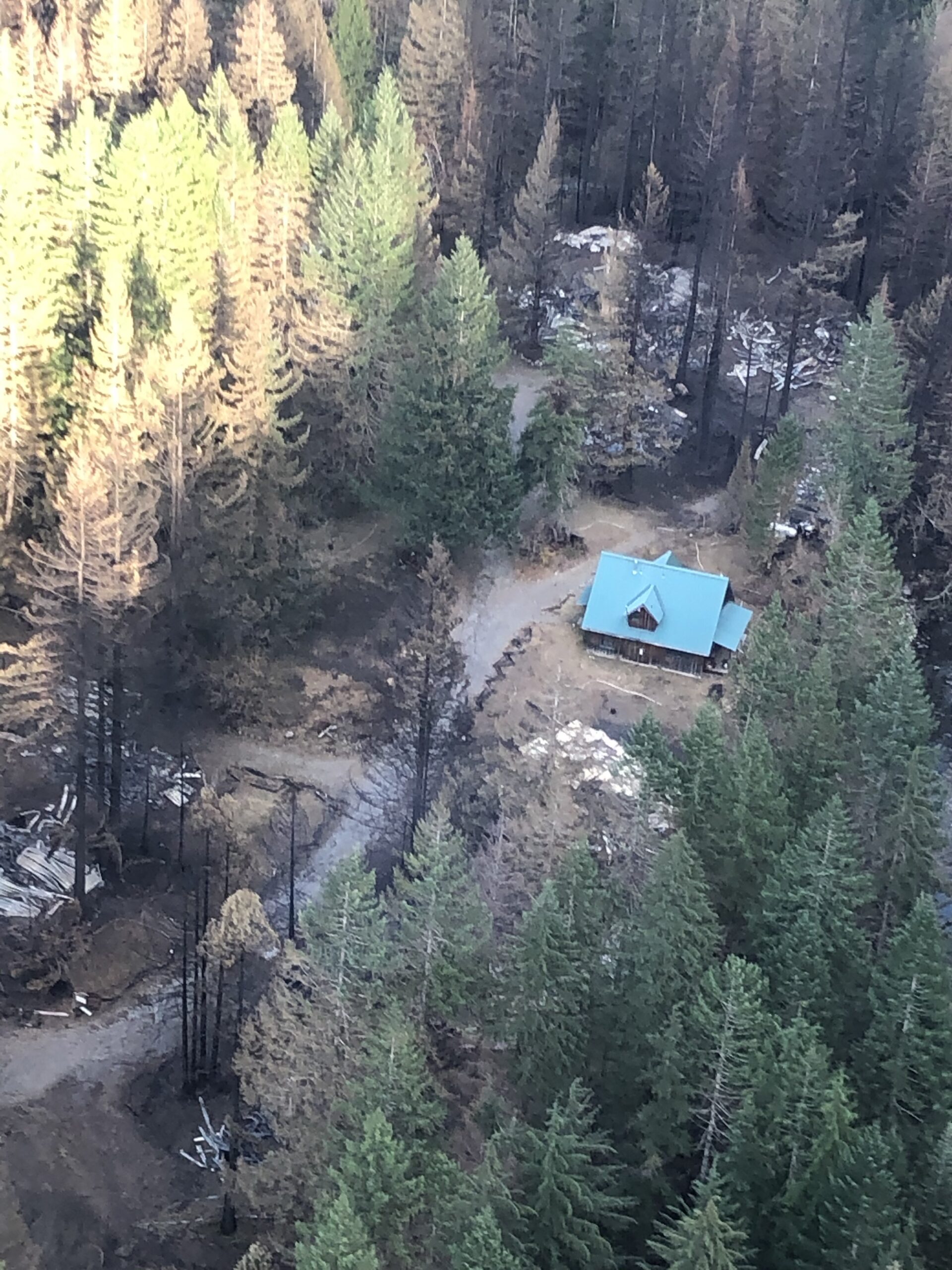A brief history | About Jawbone Flats
A Brief History
At Opal Creek, we live, work, and play on lands that were traditionally inhabited by the Kalapuya, who live throughout the nearby Willamette Valley, and the Molalla, whose tribal lands at various times included parts of eastern Oregon, the High Cascades, and the western foothills. Points and lithic scatter dating back at least 2,000 years have been found across the Opal Creek watershed. We believe the Opal Creek area provided summer foraging and hunting, and included trade routes that connected tribes in all directions, including possibly the Whetstone Mountain Trail.
Part of the forest has survived three forest fires, estimated to have occurred around 1550, 1835, and most recently, 2020. Forest fires in old-growth forests are rarely totally devastating. At Opal Creek, many of the big trees survived, particularly those located in cool, wet places along the area’s hundreds of streams.
In 1859, miners arrived in the valley and discovered gold. James P. Hewitt and his Amalgamated Mining Co. began building the Jawbone Flats mining camp in 1930, where they processed lead, zinc, copper and silver. Some of the mining roads and the Gold Creek Bridge were constructed in 1939 under President Roosevelt’s New Deal. Mining at Opal Creek was never very profitable, and by the time snow damaged the Jawbone Flats buildings in the 1950s, operations had all but ceased.
In 1944, James Hewitt’s daughter Dolores had married future Oregon governor Vic Atiyeh, fatefully introducing the Atiyeh family to Opal Creek. Through the 1960s and 1970s Vic’s nephew George Atiyeh managed the Shiny Rock Mining Company, living part-time at Jawbone Flats with a small contingent of miners and their families. Shiny Rock Mining Company was one of many private landowners in the area based on old mining claims.
In the 1970s and 1980s, plans to log old-growth stands at Opal Creek began to stir up local activists who saw that Opal Creek was one of the last of a very special kind of ecosystem. Friends of Opal Creek was established in 1989 to secure permanent protection of the watershed by increasing public awareness of the natural and cultural resources, scenic beauty, plant and animal diversity, and ecological complexity of this extraordinary area. In 1992, mining ceased and the Shiny Rock Mining Company gave Friends of Opal Creek a land gift valued at $12.6 million. Included were 151 acres of land: Jawbone Flats and a stand of old-growth forest.
Local and statewide efforts culminated in October 1996 with the establishment, through federal legislation, of the 20,827-acre Opal Creek Wilderness, the 13,538-acre Opal Creek Scenic Recreation Area and a 3,066-acre Wild and Scenic River designation for Elkhorn Creek. Except for Jawbone Flats, the Opal Creek Act required that all privately-owned lands be returned to public ownership. The Opal Creek forest has received international attention and is enjoyed by more than 20,000 visitors each year.
About Jawbone Flats
Jawbone Flats is a 15-acre private inholding bordered on the north by the Opal Creek Wilderness and on the south, east, and west by the Opal Creek Scenic Recreation Area.
Each spring and fall, Jawbone Flats is typically bustling with schoolchildren enjoying one of the most unique outdoor school experiences in Oregon. During the summer, our Opal Creek Expeditions backpackers head deeper into the wilderness for weeklong trips.
In September of 2020, the Beachie Creek Fire decimated all of the historic cabins and buildings of Jawbone Flats. Cabin 4, a cabin rebuilt in 2000, our new outdoor classroom, and our water treatment plant are the buildings that stand today. Our efforts turn to creating a new site plan that is in harmony with the land and supports the amazing education programs we offer.


